The Depths of St. Patrick's Day Symbols!
Beyond the green attire and festive parades, St. Patrick's Day boasts a wealth of fascinating symbols, each woven into the rich tapestry of Irish culture and tradition. Here, you'll embark on a captivating journey to uncover the meaning behind these iconic emblems, from the mystical shamrock to the mischievous leprechaun.
Unravel the historical significance of the Celtic cross, delve into the folklore surrounding the pot of gold, and understand how the vibrant green hue became synonymous with this joyous celebration. With interactive explanations, engaging visuals, and captivating stories, this page promises to unlock the secrets hidden within each symbol, enriching your understanding and appreciation of St. Patrick's Day.
Prepare to be whisked away on a magical adventure, where cultural heritage meets playful exploration! So, don your detective hat and join us as we decipher the hidden language of St. Patrick's Day symbols!
St. Patrick's Traditional Symbols
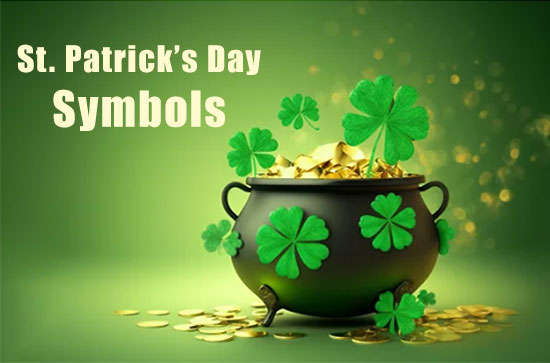
St. Patrick's Day, which is celebrated on March 17th, is a cultural and religious holiday that honors the patron saint of Ireland. It is a day of celebration and merriment, with parades, music, and festivals held around the world. St. Patrick's Day is associated with many traditional symbols that are used to celebrate the holiday.
Its time for you to know all about the symbols that represent St patty's Day and hence, understand their importance in our lives altogether. You can also go ahead and refer this to your friends and mates to share your knowledge on the symbols associated with St. Patrick’s Day
Shamrock
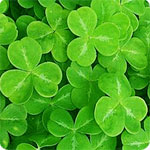
This three-leaved clover is perhaps the most well-known symbol of Ireland and St. Patrick's Day. Legend has it that St. Patrick used the shamrock to explain the Holy Trinity to the Irish people, making it a symbol of faith and Christianity.
The Celtic Cross:
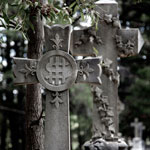
This high cross with a circle around the center is another religious symbol associated with Ireland and St. Patrick. It represents the merging of Irish pagan tradition with Christianity.
The Claddagh Ring

The Claddagh ring is a traditional Irish ring that features two hands holding a heart, with a crown on top. The ring is often given as a symbol of love, friendship, and loyalty.
Shillelagh

Shillelagh was the name of an oak - forest in County Wicklow; hence a club made from an Oak was often called a 'Shillelagh'. Little children carry plastic Shillelaghs on this occasion.
Blarney Stone
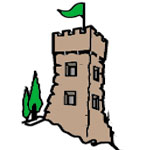
There is custom to kiss the Blarney Stone on this day. This stone is set on the wall of the Blarney Castle Tower in a village named Blarney in Ireland. Anyone who kisses the Blarney Stone is supposed to receive the gift of 'persuasive eloquence' (the ability to speak convincingly). It is believed that St. Patrick had a winning personality that enabled him to fulfil his mission of converting almost the whole of Ireland into Christianity.
Cultural Symbols:
The Color Green

The lush green landscape of Ireland, known as the "Emerald Isle," has led to the color green becoming synonymous with St. Patrick's Day. People often wear green clothing and decorations to celebrate the holiday and Irish heritage.
Irish Flag

The tricolored flag of Ireland, featuring green, white, and orange, is often displayed proudly during St. Patrick's Day celebrations.
Leprechaun:
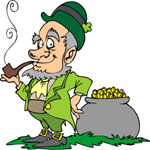
These mischievous fairies from Irish folklore have become popular figures associated with St. Patrick's Day, often depicted as guardians of hidden pots of gold. While not explicitly religious, they add a playful and fantastical element to the holiday.
Celtic Harp
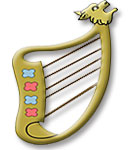
This stringed instrument is the national symbol of Ireland and represents its rich musical heritage. It's often featured in St. Patrick's Day parades and festivities.
Food and Drink:
Corned Beef and Cabbage
While not historically connected to Ireland, this dish has become a popular staple of St. Patrick's Day meals, particularly in North America.
Soda Bread
This traditional Irish bread is often served with meals on St. Patrick's Day
Green Beer
Dying beer green has become a fun and festive way to celebrate the holiday, though it's not a traditional Irish drink.
These symbols are all important parts of St. Patrick's Day celebrations and are used to honor the rich cultural heritage of Ireland.
Try out the other sections
 Christmas
Christmas Thanksgiving
Thanksgiving Craft Ideas for Kids
Craft Ideas for Kids Benefits of Yoga for Kids
Benefits of Yoga for Kids School Projects & Homework Help
School Projects & Homework Help